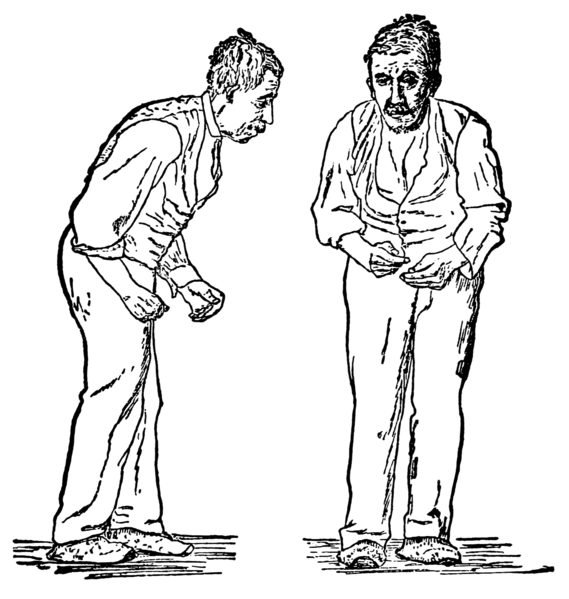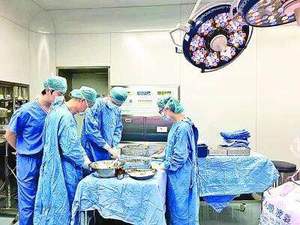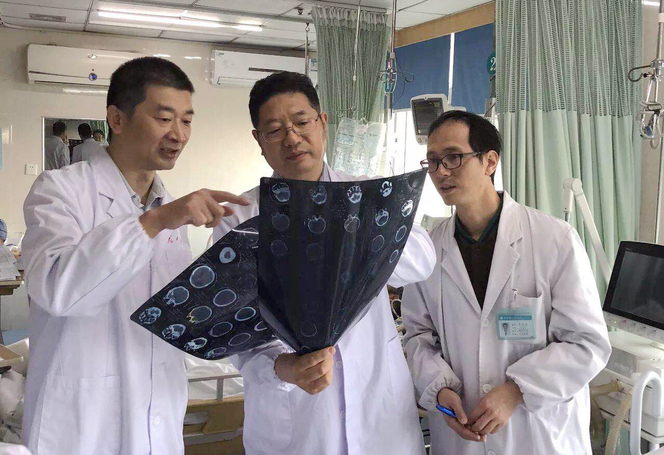In 1817, English doctor James Parkinson published an essay describing the characteristic resting tremor, abnormal posture and gait, paralysis and diminished muscle strength, and the way that the disease progresses over time. Hence this disease was named Parkinson’s disease (PD) in honor of James Parkinson.

Illustration of Parkinson's disease by William Richard Gowers, first published in A Manual of Diseases of the Nervous System (1886).
“PD is a long-term degenerative disorder of the central nervous system that mainly affects the motor system. The symptoms generally come on slowly over time. At present, there is no cure for PD, with treatment directed at improving symptoms,” says WANG Yirong, director of the Department of Neurosurgery, Sir Run Run Shaw Hospital Affiliated to the Zhejiang University School of Medicine.
PD has brought tremendous pain to mankind. Studies reveal that mental workers and males are more often affected. It has become the third “killer” that severely jeopardizes the health of elderly people, following cancer and cardio-cerebrovascular diseases.
“The number of patients with PD has reached over 5 million globally, among whom around 2.5 million are from China,” WANG says. “There is a tendency that PD starts to affect people at a young age. Patients with young-onset Parkinson’s disease account for 10% of the PD patients. The youngest patient is only 10 years old.”
“PD is easily overlooked. Many of my patients think that such initial symptoms as shaking, rigidity, slowness of movement, and difficulty with walking are caused by their old age, thus delaying early treatment,” says LYU Wen, a PD expert in the Department of Neurology.
Mankind has long been fighting PD for a long time. PD patients can be treated with medications, surgery, rehabilitation and psychotherapy. “Deep brain stimulation (DBS) is perceived as one of the most effective therapies for PD,” says LYU. “It is marked by slight injuries, minor side effects and few complications, thus being able to improve patients’ various symptoms.”

In 2003, ZHU Xianli and NIU Huanjiang from Sir Run Run Shaw Hospital Affiliated to the ZJU performed the first DBS operation in Zhejiang Province and it was outstandingly successful.
In 2004, the hospital set up an inter-disciplinary team to combat PD. Over the past decade, the team has absorbed more than 40 experts from various subjects. They have made unswerving efforts to fight this incurable disease and made remarkable achievements, such as developing a collaborative treatment pattern incorporating neurology, neurosurgery and rehabilitation.
This team has become a powerful force in combating PD in China. On this team, WANG Yirong is the flag carrier. He has been committed to teaching, research and medical practice in the field of neurosurgery and is therefore equipped with extensive clinical experience and superb theoretical qualities. ZHU Xianli is one of the Chinese pioneers in DBS surgery. NIU Huanjiang is a rising star in combating PD. LYU Wen is the backbone of the team and has long been dedicated to therapies for and research into PD.
“Our success rate of DBS surgeries has reached an amazing 100% so far. It proves that our inter-disciplinary cooperation pattern is a tremendous success,” says LYU.

“Most hospitals adopt a specialized diagnosis and treatment approach. The major drawback with this approach is that complicated and rare diseases are prone to be neglected. Although a single specialization team may well find itself inadequate and incompetent, it cannot find a suitable way to get doctors in other fields involved. As a consequence, this approach poses an insurmountable barrier to disciplinary development,” says WANG.
The causes of PD are extremely sophisticated. In the process of diagnosis, doctors need to exclude many diseases, such as mental disorder, Alzheimer’s disease and hydrocephalus. A single department cannot rule out other causes. Only through cross-disciplinary cooperation will an effective and objective diagnosis be made.
Although mankind has made constant progress in research into PD, the reason for PD is yet to be identified and there has hitherto been no thorough cure for it. Nevertheless, mankind has accumulated a myriad of experience in combating PD and enabled many patients to have a good life quality.
“It is projected that the overall number of PD patients will have added up to 10 million by 2030 around the world and that of PD patients will have reached approximately 5 million. There is still a long way to go before mankind can cure PD,” says WANG.